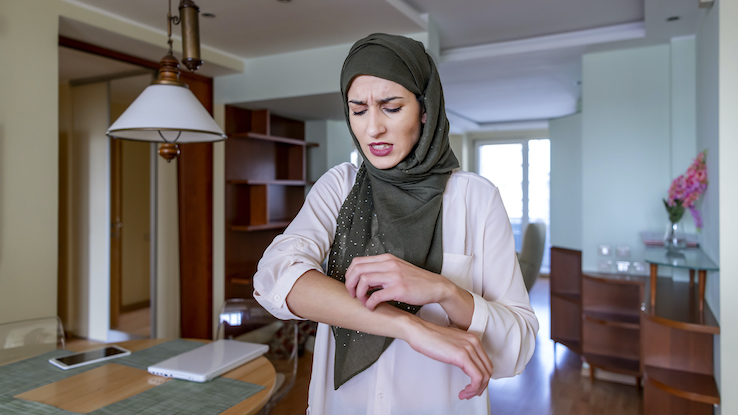
Chickenpox, a common childhood illness, is caused by the varicella zoster virus. You likely know it for the characteristic red, itchy rash it causes. Chickenpox most often affects children. However, it can infect adolescents and adults, too.
Chickenpox is highly contagious. The virus can spread via respiratory droplets that you emit by coughing or sneezing. Direct skin-to-skin contact can also transmit chickenpox. Once the virus has spread, it causes a red, blistering, widespread rash that can be quite painful.
The rashes generally appear within one to two weeks after exposure. However, you’ll be contagious for several days before the rash appears. Typically, the rash chickenpox causes will resolve within one week. It’s important that, if you have an active chickenpox rash, you quarantine away from people who haven’t been infected with varicella zoster before. The virus can be more harmful to adults compared to children. You’ll also want to look out for these symptoms, which may appear slightly before or at the same time that the chickenpox rash develops.
5 Key Symptoms of Chickenpox
There are several characteristic symptoms associated with chickenpox. Continue reading to learn more.
Fever and Malaise
When you’re exposed to the varicella zoster virus, the first noticeable symptoms you’ll likely experience are fever, exhaustion and a general feeling that you’re sick, which is also referred to as malaise. You might also lose your appetite or have a severe headache. In certain cases, you could develop severe nausea or vomiting.
Cough and Sore Throat
In addition to fever and malaise, a sore throat and coughing fits are also common with chickenpox. These symptoms typically develop within two weeks after you’ve been exposed to the virus.
Rash
The most common sign of chickenpox is a characteristic widespread rash that can develop anywhere on your body. However, this rash doesn’t usually appear until your first symptoms — which are easy to mistake for the common cold or flu — develop. The chickenpox rash shows up as pink, fluid-filled blisters that appear in small clusters over a period of two to four days.
The blisters are itchy and may cause significant pain and discomfort when you scratch them. Over time, the blisters open, leak fluid and form scabs. While it can be tempting to scratch your skin to find relief, doing so can lead to infections and permanent scarring.
Treating Chickenpox
Chickenpox infections typically resolve on their own without treatment. But, you can manage uncomfortable symptoms, such as itching and fever, at home with anti-itch medications like calamine lotion and over-the-counter fever medications. Because chickenpox symptoms can look like those you might experience with other illnesses, it’s always best to seek medical attention and contact your doctor if you think you might have chickenpox. They can give you an official diagnosis and suggest helpful ways to manage the virus as you recover.
What Can You Do to Prevent Chickenpox?
Chickenpox is a contagious infection that’s most common in children. But, it can also affect you if you haven’t been vaccinated or didn’t contract the virus as a child. Symptoms can range from mild to severe, but you may recover on your own within a few weeks’ time.
Because chickenpox is so contagious, it’s important that you recover at home if you do come down with the virus. This helps you avoid spreading chickenpox to others. Learning about the common signs of chickenpox can help ensure you detect potential symptoms early on, allowing you to take the appropriate measures for treating the illness if you or your child contract it.
Resource Links:





